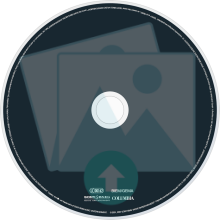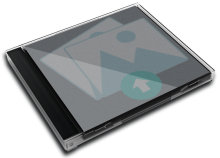Track List
01) The Wind of Keltia
02) An dro
03) The Trees They Grow High
04) An alarc'h
05) An durzhunel
06) Telenn gwad / The Foggy Dew
07) Pop plinn
08) Tha mi sgith
09) The King of the Fairies
10) Tri martolod
11) Kost ar c'hoad
12) Suite sudarmoricaine
01) The Wind of Keltia
02) An dro
03) The Trees They Grow High
04) An alarc'h
05) An durzhunel
06) Telenn gwad / The Foggy Dew
07) Pop plinn
08) Tha mi sgith
09) The King of the Fairies
10) Tri martolod
11) Kost ar c'hoad
12) Suite sudarmoricaine
3:42
3:07
3:04
2:25
3:23
3:57
3:37
4:22
3:20
4:27
3:54
3:29
Data Complete 80%
Total Rating
Total Rating
Back Cover![]()
CD Art
3D Case
3D Thumb
3D Flat
3D Face
3D Spine
First Released
![]() 1972
1972
![]() Folk
Folk
![]() Enlightened
Enlightened
![]() Folk
Folk
![]() ---
---
![]() Medium
Medium
![]() Live
Live
![]() 0 copies
0 copies
Album Description
Available in:

À l'Olympia (Also called At the Olympia and Olympia Concert) was Stivell's first live album, recording at L'Olympia. It was released by Fontana in 1972. This live concert was divided into two parts: the first acoustic folk, the second part being electric folk in a style then known as Celtic rock. The evening is a musical tour around the Celtic fringe, from Brittany northwards. It was broadcast live on one of the three radio stations in France (seven million listeners live on Radio Europe 1). Alan Stivell was accompanied by Dan Ar Braz on guitar, Michel Santangelli (the future drummer for Jacques Higelin) on percussion, Gabriel Yacoub, René Werneer, Pascal Stive, Gérard Levasseur, Serj Parayre and Michaël Klec’h. Stivell à l'Olympia sold a staggering 1,500,000 copies in just over a year (more than 2 million thereafter) and put both Stivell and Breton music on the cultural map once and for all.
1972, the year of its release, was one of radical ferment at home and abroad. The widespread revolt of May 1968 had generated a "back to the earth" movement amongst French students and intelligensia. The entry of Britain and Ireland into the EEC was seen by radicals in Brittany as the long-awaited opportunity to bring the Celtic nations together and make the ancient dream of Celtic unity a reality. Alan Stivell was closely identified with these trends, even at times hailed as a champion of one or the other cause, but he was himself, as he often later claimed, uneasy about taking on the role of a musical freedom fighter. His deep fascination with cutting edge technology, fuelled by his early love of science fiction put him at odds with any "back to the earth" idealism. Despite the hopes he shared with many of his fellow Breton for a Celtic cultural revival and unity, he always sought to avoid being straight-jacketed by a narrow traditionalist outlook. The electric ambiance of Alan Stivell and his musicians quickly spread like wildfire in France: Stivell had just launched the first "Breton wave". Music from Brittany also became extremely popular and the song Tri Martolod, which is still playing on the radio and in our memories, became the battle flag for an entire generation.

User Album Review
None...
External Album Reviews
None...
User Comments


Available in:
À l'Olympia (Also called At the Olympia and Olympia Concert) was Stivell's first live album, recording at L'Olympia. It was released by Fontana in 1972. This live concert was divided into two parts: the first acoustic folk, the second part being electric folk in a style then known as Celtic rock. The evening is a musical tour around the Celtic fringe, from Brittany northwards. It was broadcast live on one of the three radio stations in France (seven million listeners live on Radio Europe 1). Alan Stivell was accompanied by Dan Ar Braz on guitar, Michel Santangelli (the future drummer for Jacques Higelin) on percussion, Gabriel Yacoub, René Werneer, Pascal Stive, Gérard Levasseur, Serj Parayre and Michaël Klec’h. Stivell à l'Olympia sold a staggering 1,500,000 copies in just over a year (more than 2 million thereafter) and put both Stivell and Breton music on the cultural map once and for all.
1972, the year of its release, was one of radical ferment at home and abroad. The widespread revolt of May 1968 had generated a "back to the earth" movement amongst French students and intelligensia. The entry of Britain and Ireland into the EEC was seen by radicals in Brittany as the long-awaited opportunity to bring the Celtic nations together and make the ancient dream of Celtic unity a reality. Alan Stivell was closely identified with these trends, even at times hailed as a champion of one or the other cause, but he was himself, as he often later claimed, uneasy about taking on the role of a musical freedom fighter. His deep fascination with cutting edge technology, fuelled by his early love of science fiction put him at odds with any "back to the earth" idealism. Despite the hopes he shared with many of his fellow Breton for a Celtic cultural revival and unity, he always sought to avoid being straight-jacketed by a narrow traditionalist outlook. The electric ambiance of Alan Stivell and his musicians quickly spread like wildfire in France: Stivell had just launched the first "Breton wave". Music from Brittany also became extremely popular and the song Tri Martolod, which is still playing on the radio and in our memories, became the battle flag for an entire generation.
User Album Review
None...
External Album Reviews
None...
User Comments

No comments yet...


